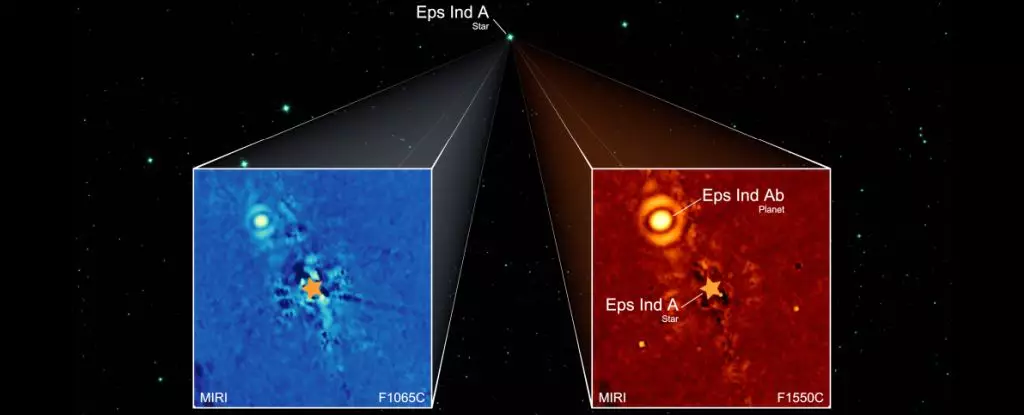The discovery of the exoplanet Eps Ind Ab using the James Webb Space Telescope (JWST) marks a new era in exoplanet science. This gas giant has been imaged directly, separate from its host star, making it a rare and valuable find. Previous methods of detecting exoplanets have been indirect, relying on observing the effects of the exoplanet on its host star. However, direct imaging allows astronomers to study exoplanets more closely, gaining insights into their characteristics and behavior.
Eps Ind Ab is a super-Jupiter, orbiting its star at a distance similar to that of Neptune from the Sun. What sets this exoplanet apart is its coldness, making it unique among gas giants studied by JWST. The unexpected discovery of Eps Ind Ab challenges previous assumptions about the exoplanet and highlights the importance of direct imaging in advancing our understanding of alien worlds.
Detecting exoplanets is a complex process due to their small size, distance from Earth, and faint light emission. Indirect methods of detection have limitations, favoring larger exoplanets that are closer to their host stars. Direct imaging, although challenging, offers a glimpse into the diverse range of exoplanets that exist in the universe. Only a handful of exoplanets have been directly imaged to date, emphasizing the need for innovative approaches like JWST.
JWST’s infrared capabilities and coronagraph technology enable astronomers to detect dim light sources, such as exoplanets, with unprecedented precision. The discovery of Eps Ind Ab showcases the power of JWST in unraveling the mysteries of distant exoplanetary systems. By observing the space around Epsilon Indi A, researchers were able to confirm the existence of Eps Ind Ab and gather valuable data about its properties and orbital characteristics.
Moving forward, astronomers plan to conduct further observations of Eps Ind Ab to study its atmospheric composition and refine its orbit. Additionally, they aim to explore other nearby planetary systems in search of cold gas giants that have eluded detection. Direct imaging with instruments like JWST holds immense potential for expanding our knowledge of exoplanets and shedding light on the diversity of alien worlds in the cosmos.
The discovery of exoplanet Eps Ind Ab using JWST represents a significant milestone in exoplanet science. Direct imaging has opened up new possibilities for studying exoplanets and uncovering their secrets. With advanced technology and innovative research methods, astronomers are poised to make groundbreaking discoveries in the field of exoplanet exploration, paving the way for a deeper understanding of the vast universe beyond our own solar system.


Leave a Reply